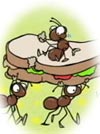 | ANTS communicate with each other, navigate by landmark and beacon use, are able to estimate quite precisely numbers of encounters with members of other colonies on their feeding areas. |
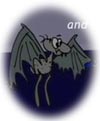 | BATS recognize individual voices and utilize echolocation to navigate. |
 | BEES communicate where food is through their dance and can learn to decipher the language of bees on other continents. |
 | BIRDS’ extensive intelligence, developed from adaptive brainpower, enabled them to avoid extinction 65 million years ago. |
 | BONOBOS can learn sign language to communicate with humans and invent new combinations of symbols to express thoughts. |
 | CATS have a good memory which aids them in their learning processes and exhibit qualities of intelligence such as curiosity, creative problem solving and communication. |
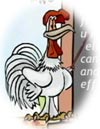 | CHICKENS have a complex social organization where they can remember more than 100 other chickens; communicate through over 30 types of vocalizations; demonstrate self-control; pass along cultural knowledge from one generation to the next; understand cause and effect relationships; can solve math problems; and are able to be effective therapy animals. |
 | CHIMPANZEES use a variety of tools; can communicate by sign language; and have outperformed human college students in tasks requiring remembering numbers. |
 | COWS are excellent at remembering things; have social relationships; are emotionally complex; understand cause and effect relationships; and can figure out solutions to problems. |
 | CORVIDS, which include birds such as crows and ravens, have demonstrated hallmarks of higher intelligence in common with humans such as tool use; communicating through different dialects among kin; sophisticated social behavior; and tactical behavior. |
 | CRABS have the remarkable aptitude to memorize visual features; learn from their mistakes; adapt to different stimuli on their environment based on past experiences; look out for one another and do not fight their neighbors; react to acoustic stimuli; communicate through sound vibrations; and provide care and ensure a clean environment for their young. |
 | DOGS have applied their superior senses to give warnings of life endangering situations in humans such as heart attacks, low insulin levels, and seizures; can learn to be guides for the visually impaired; possess good memories; can serve as therapy animals; and are trained as search and rescue members. |
 | DOLPHINS have passed self-recognition tests; possess special sensory skills, such as echolocation; understand symbol-based language; think about the future; learn new behaviors that they pass on to fellow dolphins; and have recognized when humans are in danger and provided protection from predators or guided them towards the shore. |
 | EARTHWORMS can make decisions on the kinds of leafy matter they use to block their tunnels. |
 | ELEPHANTS can perform simple arithmetic and have passed self-recognition tests. |
 | FISH can communicate with one another; use tools; and have shown to have good long-term memory. |
 | FROGS, such as the male gray treefrogs, when singing in a chorus, adjust their croak to stand out and get the attention of a female. |
 | GIRAFFES communicate with each other at an infrasonic level that humans cannot hear. |
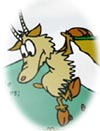 | GOATS have a natural curiosity and intelligence; are willing to explore new surroundings; can learn new tasks; are capable of easily escaping from enclosures; and will not consume soiled food or contaminated water. |
 | GORILLAS use similar body language as humans to communicate with each other and can learn sign language to “speak” with humans. |
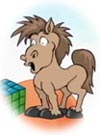 | HORSES can count; perform cognitive tasks; have good spatial recognition; excel at simple learning; and are able to solve advanced mental challenges. |
 | INSECTS communicate not only between species but with subterranean and land animals and use plants like a telephone line to exchange information. |
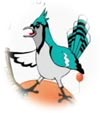 | JAY BIRDS use memories of past experiences to plan ahead; can remember thousands of food caches; and remember how long they have stored a particular food and will retrieve it before it spoils. |
 | KOALAS communicate through calls to attract mates or to warn of danger. |
 | LLAMAS are sensitive and intelligent animals that are effective therapy assistants to humans. |
 | LOBSTERS, like dolphins and many other animals, use complicated signals to explore their surroundings and establish social relationships; can detect slight changes of only a degree or two in water temperature; and communicate through pheromones. |
 | MICE are socially complex animals with the capability to learn and solve problems. |
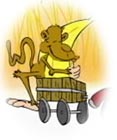 | MONKEYS have a culture and social system of passing information from one generation to the next that teaches the young to find food, recognize relatives, and use tools; self-medicate using beneficial plants; possess sophisticated forms of communication that involve visual cues, auditory calls and olfactory signals; and have learned tasks to assist human quadriplegics with daily living. |
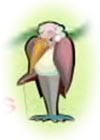 | MYNAHS are known as the best mimics of human speech and other sounds, with some being able to learn a new word every couple of days. |
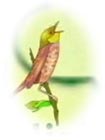 | NIGHTINGALES have complex songs to communicate and adjust their calls according to the ambient noise level. |
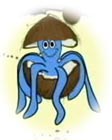 | OCTOPUSES construct their own shelters from coconut shells, demonstrating tool use in an invertebrate animal. |
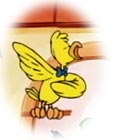 | PARROTS can associate human words with their meanings; learn to mimic a large vocabulary of human language; dance to music and change their rhythm based on the musical beat; excel at cognitive tasks; and can apply abstract concepts such as shape, color, number, etc. |
 | PIGS are highly intelligent with a good memory; have a complex social structure; are capable of abstract representation; possess a higher cognitive ability than a 3-year-old child; and learn new things quickly, including learning their names, playing video games, and adjusting the air conditioner on and off to be comfortable. |
 | PIGEONS can learn complex actions and response sequences; recognize other individual pigeons; have passed the self-awareness test; remember routes home from long distances; aid in life jacket detection for sea rescues; saved countless human lives in times of conflict; are able to detect earthquakes and electrical storms through sound; can remember hundreds of images for several years; and can recognize paintings by different artists on par with college students. |
 | QUEEN BEES effectively communicate with the bee colony through vibratory signals called piping. |
 | RABBITS have a complex social structure; can learn to use a litter box and come when called; and have recognized danger and alerted their human companions. |
 | RATS have the ability to represent a spatial pattern in mazes and can be trained to safely detect landmines. |
 | SEALS, like humans, use the position of stars at night to navigate their way in open water. |
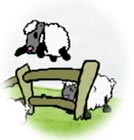 | SHEEP can recognize the faces of fellow sheep and humans; perceive high frequency sounds that cannot be heard by humans; have excellent spatial memory; and have learned to outsmart barriers to get to a better food source. |
 | SHRIMP communicate via visual and chemical signals. |
 | SQUIRRELS, and other scatter-hoarder animals, can remember the locations of thousands of food caches, often following major physical changes in their environment. |
 | TOADS can detect very low frequency radio sounding to predict earthquakes. |
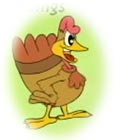 | TURKEYS have distinct personalities; are keenly aware of their surroundings to blend in and escape danger; are highly social animals; and can recognize familiar human faces. |
 | TURTLES can spot a lake or pond a mile in the distance; are adept at learning mazes; enjoy forms of entertainment and fun; communicate subsonically; have existed in habitats where little else can survive for over 230 million years; can recognize human companions; and females accurately return to the same beach where they were born to lay eggs during breeding season. |
 | UMBRELLA COCKATOOS are highly intelligent and affectionate; can imitate human speech; have a social nature; and can learn to perform simple tasks. |
 | VULTURES have shown high intelligence, accepting help from humans even in a stressful situation and use hisses to communicate their pleasure or displeasure. |
 | WHALES able to identify different fellow cetacean calls through the ocean waters and politely wait for their turn to speak; can communicate using whale songs, clicks and echolocation; are known to teach, learn, collaborate, plan and mourn; have aided humans and ships in distress to safety. |
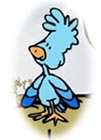 | XENOPS communicate with each other through their complex bird calls and songs. |
 | YAKS apply teamwork to protect themselves from temperatures as low as minus 50° Celsius by huddling up together at night, with the calves in the center. |
 | ZEBRA FINCHES dream when they are asleep with brain activity that mirrors that which occur during bird song; have special brain cells that are necessary for original songs; in their developmental stages to find their voice as chicks are similar to that of human babies; adjust their singing depending on their audience; and recognize one another by their particular songs. |